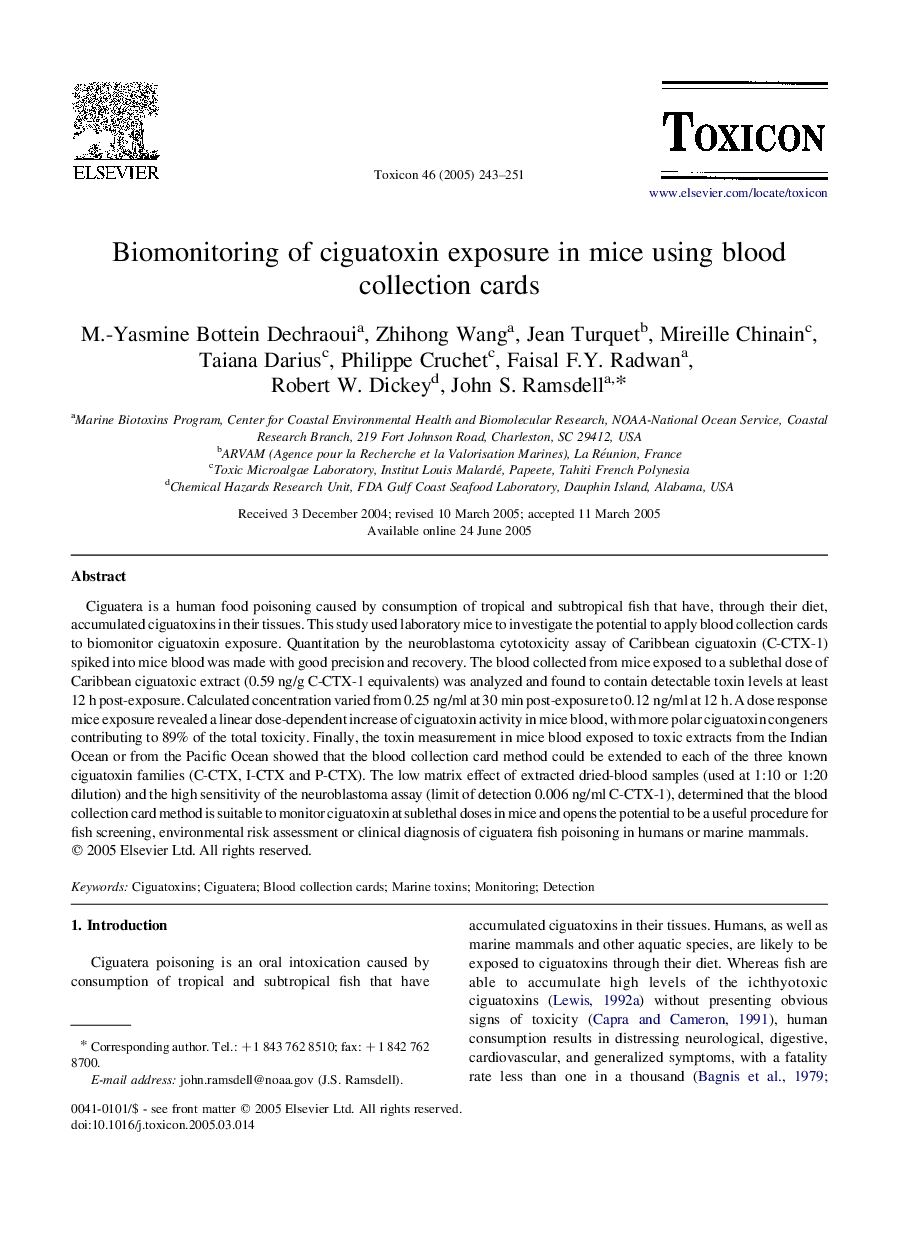| Article ID | Journal | Published Year | Pages | File Type |
|---|---|---|---|---|
| 10880341 | Toxicon | 2005 | 9 Pages |
Abstract
Ciguatera is a human food poisoning caused by consumption of tropical and subtropical fish that have, through their diet, accumulated ciguatoxins in their tissues. This study used laboratory mice to investigate the potential to apply blood collection cards to biomonitor ciguatoxin exposure. Quantitation by the neuroblastoma cytotoxicity assay of Caribbean ciguatoxin (C-CTX-1) spiked into mice blood was made with good precision and recovery. The blood collected from mice exposed to a sublethal dose of Caribbean ciguatoxic extract (0.59Â ng/g C-CTX-1 equivalents) was analyzed and found to contain detectable toxin levels at least 12Â h post-exposure. Calculated concentration varied from 0.25Â ng/ml at 30Â min post-exposure to 0.12Â ng/ml at 12Â h. A dose response mice exposure revealed a linear dose-dependent increase of ciguatoxin activity in mice blood, with more polar ciguatoxin congeners contributing to 89% of the total toxicity. Finally, the toxin measurement in mice blood exposed to toxic extracts from the Indian Ocean or from the Pacific Ocean showed that the blood collection card method could be extended to each of the three known ciguatoxin families (C-CTX, I-CTX and P-CTX). The low matrix effect of extracted dried-blood samples (used at 1:10 or 1:20 dilution) and the high sensitivity of the neuroblastoma assay (limit of detection 0.006Â ng/ml C-CTX-1), determined that the blood collection card method is suitable to monitor ciguatoxin at sublethal doses in mice and opens the potential to be a useful procedure for fish screening, environmental risk assessment or clinical diagnosis of ciguatera fish poisoning in humans or marine mammals.
Related Topics
Life Sciences
Biochemistry, Genetics and Molecular Biology
Biochemistry, Genetics and Molecular Biology (General)
Authors
M.-Yasmine Bottein Dechraoui, Zhihong Wang, Jean Turquet, Mireille Chinain, Taiana Darius, Philippe Cruchet, Faisal F.Y. Radwan, Robert W. Dickey, John S. Ramsdell,
